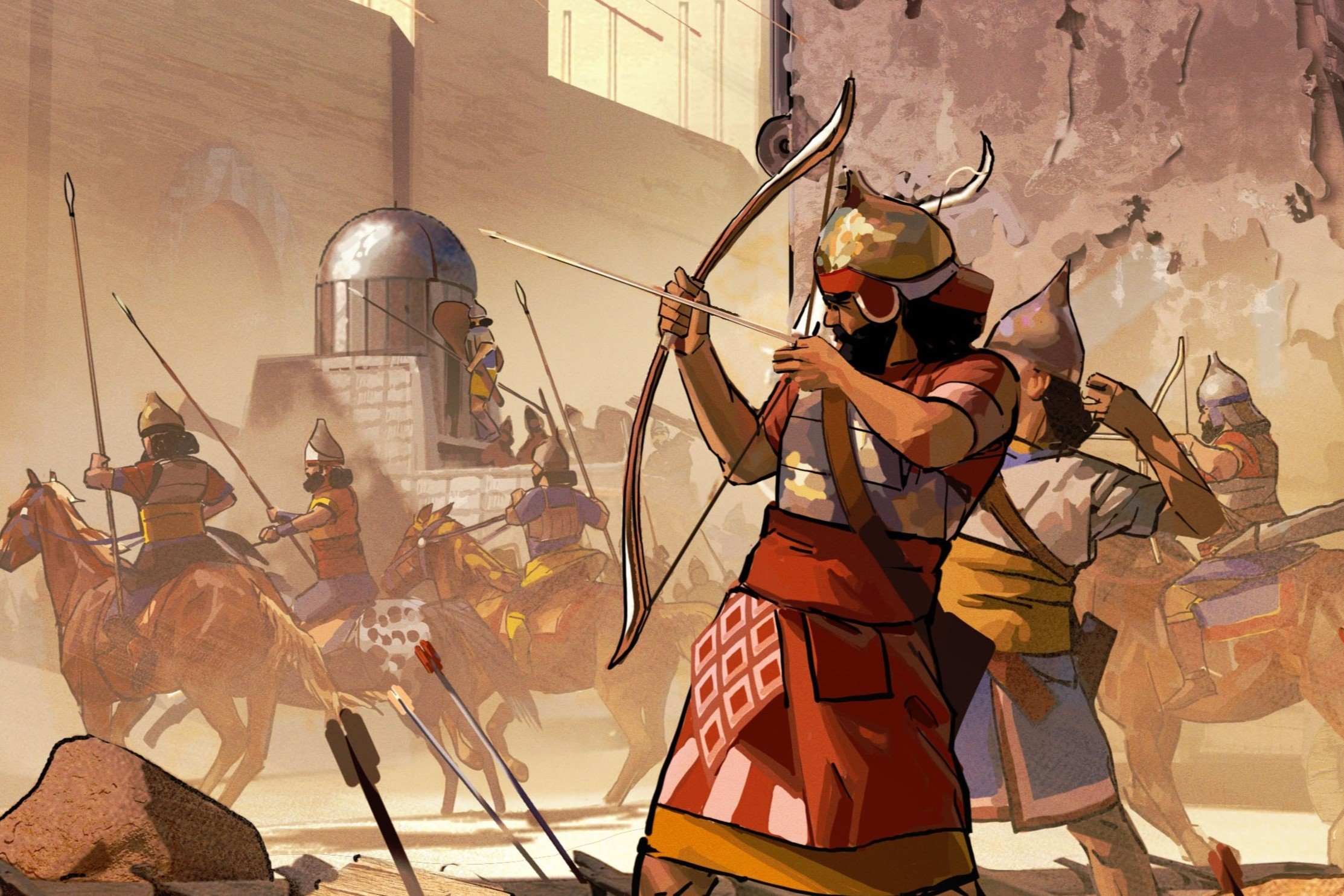
Why did the Fall of Assur happen? The Fall of Assur, an ancient city in Mesopotamia, occurred due to a combination of internal strife, economic decline, and external invasions. Assur was the heart of the Assyrian Empire, but by 614 BCE, it faced relentless attacks from the Medes and Babylonians. Internal conflicts weakened its defenses, making it vulnerable. Economic troubles further strained resources, leading to a weakened military. The Medes, led by King Cyaxares, and the Babylonians, under King Nabopolassar, seized this opportunity. They launched a coordinated assault, breaching the city’s walls and bringing an end to Assur’s dominance.
Key Takeaways:
- The fall of Assur, an ancient city, teaches us that even powerful empires can decline due to internal struggles, invasions, and economic challenges. It's a reminder of the fragility of power.
- Assur's legacy lives on through its architectural, religious, and cultural influence. Its fall offers lessons on the importance of unity, resilience, and the preservation of identity.
The Fall of Assur: A Turning Point in History
The fall of Assur marked a significant event in ancient history. This ancient city, once a powerful center of the Assyrian Empire, saw its decline and eventual fall due to various factors. Let's explore some intriguing facts about this historic event.
The Rise and Glory of Assur
Before delving into the fall, understanding the rise and glory of Assur is essential. This city was not just a political center but also a cultural and religious hub.
- Assur was the first capital of the Assyrian Empire, established around 2500 BCE.
- The city was named after the chief god of the Assyrians, Ashur.
- Assur became a major trading center due to its strategic location along the Tigris River.
- The city was known for its impressive architecture, including ziggurats and palaces.
- Assur was a religious center where the Assyrians worshipped their gods and performed rituals.
Factors Leading to the Fall
Several factors contributed to the decline and eventual fall of Assur. These included internal strife, external invasions, and economic challenges.
- Internal power struggles weakened the political stability of Assur.
- The rise of rival powers, such as Babylon and Media, posed significant threats.
- Economic difficulties, including trade disruptions, strained the city's resources.
- Assur faced repeated invasions from neighboring tribes and empires.
- The city's defenses were eventually breached, leading to its downfall.
Key Events in the Fall of Assur
The fall of Assur was not a single event but a series of significant occurrences that led to its collapse.
- In 614 BCE, the Medes, led by King Cyaxares, attacked and captured Assur.
- The Babylonians, under King Nabopolassar, allied with the Medes to defeat Assur.
- The combined forces of the Medes and Babylonians laid siege to the city.
- Assur's walls were breached after a prolonged siege, leading to its capture.
- The city's inhabitants faced massacre or enslavement by the invaders.
The Aftermath of the Fall
The fall of Assur had far-reaching consequences for the region and its people. It marked the end of an era and the beginning of new power dynamics.
- The fall of Assur signaled the decline of the Assyrian Empire.
- Many Assyrians fled to other regions, seeking refuge from the invaders.
- The Medes and Babylonians divided the conquered territories among themselves.
- Assur's temples and palaces were looted and destroyed.
- The city's cultural and religious significance diminished over time.
Archaeological Discoveries
Modern archaeology has unearthed many fascinating details about Assur and its fall. These discoveries provide valuable insights into the city's history and culture.
- Excavations at Assur have revealed remnants of its impressive architecture.
- Archaeologists have found artifacts, including pottery, tools, and inscriptions.
- The ruins of Assur's ziggurat, dedicated to the god Ashur, have been uncovered.
- Inscriptions detailing the city's history and its rulers have been discovered.
- Evidence of the city's destruction during the fall has been found in the form of charred remains and collapsed structures.
Assur's Legacy
Despite its fall, Assur's legacy continues to influence modern understanding of ancient Mesopotamian civilizations. The city's contributions to culture, religion, and governance are still recognized today.
- Assur's architectural innovations influenced later Mesopotamian cities.
- The city's religious practices and deities were adopted by neighboring cultures.
- Assur's legal and administrative systems served as models for other empires.
- The city's art and literature have been studied for their historical significance.
- Assur's fall is often cited as a cautionary tale of the rise and fall of empires.
Lessons from the Fall of Assur
The fall of Assur offers valuable lessons about the fragility of power and the importance of adaptability in the face of changing circumstances.
- Political unity is crucial for maintaining stability and preventing internal strife.
- Economic resilience is necessary to withstand external pressures and disruptions.
- Strong defenses are essential for protecting a city from invasions.
- Alliances with other powers can be both beneficial and risky.
- Cultural and religious significance can help maintain a city's identity even after its fall.
Modern Reflections on Assur
Today, historians and archaeologists continue to study Assur to gain a deeper understanding of ancient civilizations and their complexities.
- Assur's history is a subject of ongoing research and exploration.
- The city's artifacts are displayed in museums around the world.
- Assur is a UNESCO World Heritage site, recognized for its historical importance.
- Scholars analyze Assur's fall to draw parallels with modern geopolitical events.
- The story of Assur serves as a reminder of the impermanence of human achievements.
The Final Chapter of Assur
The fall of Assur marked a significant turning point in ancient history. This once-mighty city, a cornerstone of the Assyrian Empire, fell due to a combination of internal strife and external pressures. The Babylonians and Medes played crucial roles in its downfall, showcasing the ever-shifting power dynamics of the ancient world. Assur's decline wasn't just a military defeat but also a cultural and economic collapse. Its libraries, temples, and palaces, once bustling with activity, became silent ruins. Yet, the legacy of Assur lives on through archaeological discoveries and historical records, offering a glimpse into a civilization that once dominated the Near East. Understanding the rise and fall of such cities helps us appreciate the complexities of human history and the factors that shape civilizations. Assur's story is a testament to the impermanence of even the greatest empires.
Frequently Asked Questions
Was this page helpful?
Our commitment to delivering trustworthy and engaging content is at the heart of what we do. Each fact on our site is contributed by real users like you, bringing a wealth of diverse insights and information. To ensure the highest standards of accuracy and reliability, our dedicated editors meticulously review each submission. This process guarantees that the facts we share are not only fascinating but also credible. Trust in our commitment to quality and authenticity as you explore and learn with us.


